 ENERGY: EXTRA-CONTINENTAL AMBITIONS ENERGY: EXTRA-CONTINENTAL AMBITIONS |
Energy | Mines
The Democratic Republic of Congo has an invaluable energetic potential due to its river (the World's second largest in terms of its flow) an inexhaustible source of hydroelectric energy (67%). The large Inga dam has a forecasted capacity of 39,670 MW, and it aspires to furnish water beyond Africa. The gigantic project known as "Grand Inga" remains one of the largest hydroelectric projects in the world and it will be able to generate even higher revenues than those obtained by GÉCAMINES during the copper and cobalt bonanza.
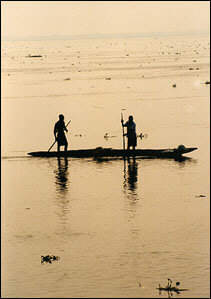
Presently the DRC exports electricity to neighboring African Countries such as Congo, Zambia, the Central African Republic, Angola and, before the war, Rwanda and Burundi. As a rule throughout the 80's and 90's the consumption of industrially produced energy was 1,317,312 tep. Out of this consumption oil products (54%) ranked first with 730,393 tep., followed by hydroelectric and thermal energy (33%) with 436,799 tep. Coal (13%) was third with 176,807 tep. Domestic consumption of wood and charcoal was estimated at 8,609,000 tep, bringing total energy consumption in the DRC to 9,952,999 tep.
According to estimates of the Société Nationale d'Electricité (National Electricity Co.), and to production estimates of independent power stations (260 Gwh) in the 1980's and beginning of the 1990's, total production of electric energy in the DRC surpassed for the first time 5,000 Gwh reaching 5,179 Gwh. The RD of Congo has 30 main hydroelectric power stations with a total installed energy of 2,485,555 Kw. turning this country into an invaluable hydroelectric energy reserve for Africa and the world at large.
SNEL (Société Nationale d'Electricité) created in 1970, controls all the large hydroelectric and thermal power stations of the country and some small hydroelectric stations belonging to mining companies located in the Kivu, Province Orientale and Kasaï-Orientale. For some time this company has experienced huge operational difficulties, especially regarding the distribution of electricity to the city of Kinshasa. Presently Kinshasa's electrification rate is approximately 25%, only considering paying subscribers. If we consider unpaid or fraudulent connections the rate reaches at least 60%. The electrification rate within the national territory is below 20%. The main concern of the population of the interior, manifested during the recent tour of the President of the Republic in this corner of the country, was precisely the lack of electricity, an essential element for security and development. This is a true paradox considering that the DRC has the potential to completely satisfy local needs (water, Inga dams I, II, III). However, the real problem of SNEL lies in the distribution network.
Kinshasa that experienced in the past 20 years a tremendous demographic boom (passing in that time from 1 million to 6 million inhabitants) is a clear example of this reality. These numbers clearly show why SNEL has not been able to face the increasing demand for electricity. Consequently many potential clients were compelled to connect themselves directly into the network. Since these connections were "pirate" ones, consumers enjoyed free consumption of electricity, and thus a vicious circle started. The existing installations could not support the overload that, more often than not, surpassed the current it was programmed to support. As a result the number of breakdowns increased until it reached an unbearable level no longer manageable. Hence receipts from regular customers stopped being enough to cover the expenses related to repair works and maintenance of the still properly working network.
The electric energy transport plan to Kinshasa has been assured mostly through a high-tension cable of 220 Kv. with a double section (with a capacity of 2x300 Mw). The city of Kinshasa's need of power was 390 Mw in 1997. Since the registered demand surpasses the thermal capacity of a single section of the 220 Kv. line, the supply of N-1 (section gate) cannot be assured anymore. This means that any delay in the construction of the second line of transport between Inga and Kinshasa will increase the uncertainty of the city's energy supply.
Regarding distribution, 80% of the installations are overcharged, forcing the network to work very inefficiently. This means in turn a bad quality of the service rendered, overburdened installations, a high number of disturbances, long interruptions of supply, high operational costs and a poor voltage quality.
A master plan to develop Kinshasa city's network has been established. It will allow for 200,000 extra homes to get connected. The cost for the development of such plan is estimated circa USD 300 million.
At the national level, there is a scheme to develop another master plan of this kind aiming to assure energy supply to the provinces. Decentralizing the dams will do exactly that. This policy definitely turns its back to mammoth projects along the line of the Inga complex, its long high voltage line linking it to the far-away province of Katanga (the country's economic and industrial lung).
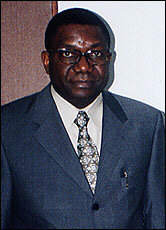
Joseph Kabila's new administration seems to have understood this fact. During a seminar on the electric energy sector reform (Kinshasa, 23-26 May, 2001) the Congolese Minister of Energy, Mr. Georges Buse Falay did not conceal the Government's determination to open up the DRC electricity sector to private capital. "I subscribe to the recommendations of this seminar, particularly the need to open up the sector to private capital. However the public character of this sector should be preserved. There is a clear need to create an appropriate legislation that will favor private investments " declared the Minister.
RÉGIDESO (Régie de Distribution d'Eau Potable - Administration of Drinking Water Distribution ) is an autonomous public institution with industrial and commercial traits that holds the monopoly of water distribution in the whole country. Created in 1933, it has not stopped developing. It has to be underlined that RÉGIDESO is one of the companies that has received most help from the World Bank. This has permitted the fast growth of its service capacity in a country - and more particularly in a capital (Kinshasa) - that has experienced a formidable demographic explosion. According to the President of its Management Committee, Mr. Lubunga Pene Shako, RÉGIDESO has prepared, together with the donors, a development plan that goes as far as the year 2015. To start with, the plan pretends to reinforce the capacity of production and distribution in big cities and the creation of water supply systems in medium-sized towns. This is included in a plan that aims to extend the activities of RÉGIDESO, since presently the drinking water service for the whole population only covers 10-15%.
Besides having to expand and maintain its distribution network, and having to repair its existing infrastructures, RÉGIDESO also has to confront such problems as the depletion of chemical products stocks, which considerably reduces the competitiveness of the State Company despite of monopoly.
According to a number of experts, the solution to RÉGIDESO's problems consists of making private some public parts of the company. Mr. Pene already considered this option. However, he believes that the problem needs to be looked at on a national level, because next to the purely commercial aspects of the company, social considerations also need to be taken into account. As he pointed out, RÉGIDESO also distributes water in small cities. Therefore, if it were to be privatized, it would harm their profitability. The commercial aspect of the investment must be a priority for the Board. However, the Government has the last word when it comes to the partial privatization of the company.
back to the top
 MINES: THE GOOSE THE LAID GOLDEN EGGS MINES: THE GOOSE THE LAID GOLDEN EGGS |
The Democratic Republic of Congo, with its 2,345,000 sq. Km is considered by all means a geological paradise. It stores all existing mining treasures possible: gold, copper, diamonds, cassierite, pyrophorum, pewter, uranium, coltan, etc.
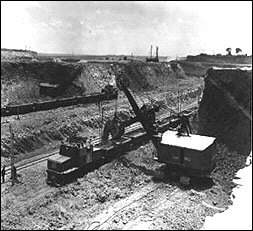
The mining sector has always played a crucial role in the balance of trade. During its glorious years its share represented 86.1% of export revenues in terms of value. GÉCAMINES (la Génerale des Carrières et des Mines), the Congolese mining giant, contributed alone 19.2% to the State budget.
When one talks about the RDC (ex-Zaire), and in particular about its economy, the name of Génerale des Carrières et des Mines, or its abridged version, GÉCAMINES, automatically comes to mind as the representative of the country's mining companies. Throughout the 80's, this State-owned company had a turnover of nearly USD 1 billion, turning it into the second most important company in the African Continent - excluding South Africa - and positioned only after the oil company Elf Gabon. The company was established on January 1, 1967 after the old exploitation company, l'Union Minière du Haut-Katanga, refused to transfer its headquarters from Brussels to Congo. The mining concession attributed to this firm covers an area of 21,500 sq. Km, spreading at both sides of the railway in the stretch between Lubumbashi to Kolwezi (335 sq. Km) via Likasi and Tenke. Its activities consist mainly on the extraction and metallurgy of copper, cobalt and zinc. The uranium deposits in Shinkolombwe were already exploited in 1940-45, during and after the war. | The impact of GÉCAMINES on the economic and financial situation of the country was quite obvious at the time. GÉCAMINES alone was responsible for 15% of GDP. At an average, it provided 20% of the State revenues and around 60% of foreign exchange deposits. GÉCAMINES used to be the mining giant of Congo, a company that brought riches to the Kingdom of Belgium (as Union Minière du Haut Katanga) and insured prosperous times for Congo for 20 long years before its independence. Unfortunately GÉCAMINES has almost stopped operations nowadays. For the first time since Congo got its independence, the smoke of GÉCAMINES' large chimney stopped in fuming in 1990, and some of its most important mines have been closed down. The plunge of copper and zinc prices and the under-sale of cobalt in 1986 had already paved the way for the large crisis that GÉCAMINES had to confront at the beginning of the 90's. The production rate sank as much as 70%.
Paradoxically this situation is not the consequence of the depletion of mineral reserves. On the contrary, they failed to adapt materials to the modern extraction norms - known to be less costly - and suffered 32 years of disastrous management. What then was the reason for a company of the size and importance of GÉCAMINES not to provide for the necessary mechanisms to update its equipment for such a long time? Funny enough, shortly after its inception as a State company in 1967, GÉCAMINES had already established three development plans. The aim of the first five-year plan (1970-74) was to bring copper production to 470,000 tons. This objective was accomplished in 1974. The second five-year plan, called P2 (1975-79) should have brought production capacity to 550,000 tons of copper in 1980. The level of investment was USD 135 million.
However, the rebellions of May 1978 in the city of Kolweizi interrupted the completion of this plan. The quarries of Dikulumbe and Mashamba and the concentrator of Dina did start operations, however the electro-refinery and the "Flash Smelting" furnace had to be abandoned.
The third five-year plan (1984-89) should have saved the company. By 1984 the ensemble of investments reached USD 750 million, including outside financing worth USD 200 million. The objective of this plan was to rehabilitate the existing complex allowing the production of 470,000 tons of copper per year. This plan was never implemented.
In 1986 the value of copper and zinc registered a sharp descent internationally, precisely when GÉCAMINES was preparing its 4th five-year development plan. It was already too late; the firm had by that time entered a point of no return. With such high production load, everyday that passed GÉCAMINES precipitated even more into the abyss. GÉCAMINES tried several times to form a joint-venture, but the difficulty lied in the fact that potential partners coming to rescue GÉCAMINES did not have the necessary means to help it out.
In April 2001 GÉCAMINES signed a partnership with the company TREMALT LIMITED in order to create a new company called Katabankola Mining Company. Its aim was to process cobalt and copper in a previously abandoned mine. So far this project has not brought benefits to GÉACAMINES.
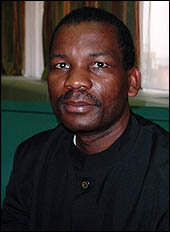
But despite the difficulties the DRC is having to deal with, the Congolese Minister of Mines, Mr. Simon Tuma-Waku, believes his country is still a paradise. "Congo is a blessed country because it has huge resources. Everything can be developed here. The mining sector in particular offers plenty of development opportunities". He affirms that his government is committed not to let any opportunity go by. Precisely for this reason, the National Parliament will pass the new Congolese Mining Code.
The future Congolese Mining Code - comprising 25 articles - substitutes a conventional mining system by a more standard one characterized by exchange and taxing regimes that are applicable to all. This new mining code has been enhanced on the one hand by a mining activity long neglected in the country - quarries of construction materials -, and on the other hand by the inclusion of a new chapter on the treatment of refuse of metallurgical and mining industries.
Therefore, it can be said that the Government has established the guidelines of what can be considered the country's new mining policy. For the Minister of Mines, Simon Tuma-Waku, "this mining code is a very important innovation for the development of the country's mining sector". A sector that really needs new investments considering the suffocating situation most companies in the sector have ended up in.
MIBA or Minière de Bakwakanga (1919), the Congolese diamond giant, has also gone through turbulent times for the past 10 years.
In 1985 MIBA sold 6,619,142 carats. To this we must add the sale of 541.842 carats from the re-treatment of reject, totaling 7,160,984 carats. These sales brought to the country a total of USD 56.1 million. However, since 1975 the MIBA production of diamonds regressed steadily. The main causes were the importance and multiplication of unlimited operations and the exhaustion of alluvial deposits after 50 years of exploitation. MIBA was forced to consider the exploitation of kimberlite, the diamond bedrock. This type of work needs considerable investments. Already in 1979 a program was set up to extract kimberlite minerals. It also intended to sweep sediments from the Mbuji-Mayi river and neighboring deposits. This project, which at the time would had needed USD 80 million to develop, would need much more nowadays, since the technology has advanced considerably.
Talking about the investment needs of MIBA, Jean Charles Okoto, President and Director General of MIBA, indicates "MIBA also needs partners to work with. Today we are concentrating in Kimberlite. We need at least between USD 80-100 million to be able to face expenses. We have substantial solid reserves. MIBA has a life expectancy of 60 years. So again friendly investors are welcome."
Considering MIBA's strategies to reach profit, Mr. Okoto, has already thought about diversifying MIBA's activities, since it only concentrated on diamonds right from the start. Analyses performed by experts revealed that the MIBA concession contains an important layer of nickel that they want to elevate to a World Laboratory category.
Regarding the increase of MIBA's production during his management, Mr. Okoto notes, "the management committee I have the privilege to be part of, had not inherited a very good situation. We faced an average production of 300-350,000 carats per month". But after Mr. OKOTO contacted some Congolese experts educated abroad, the results did not take long to come to the surface, "We passed from 350,000 to 700,000 carats per month. In August 2001 we reached 800,000 carats of diamonds. This quantity of diamonds is equivalent to USD 12 million".
The last measures announced by the Head of State, Mr. Joseph KABILA, regarding the liberalization of the diamond market came at a very good time to help revive this sector. "For the time being the necessary conditions to open an office in the DRC are not difficult. You just need to deposit an annual sum of USD 250,000 and pay USD 60,000 for the buyer's card that will allow you to have a file", explained the Minister of Mines and Hydrocarbons, Mr. Simon Tuma-Waku. This could encourage a lot of investors to come to the DRC, and it would help to eliminate fraud, which causes the Congolese State to lose large sums of money.
SOCIR, the Congolese-Italian Refining Company (Société Congolaise et Italienne de Raffinage), funded in 1975, has recently met some refining problems. For the time being it has limited its activities to stocking and refining petroleum products.
According to the Minister Simon Tuma-Waku, SOCIR should resume the objective for which it was created, i.e., refining, since - as he says - this investment is crucial to the country. However, SOCIR's real problem is that the production cost of Congolese crude is too high, whereas importing finished products is considerably cheaper. Besides, the Congolese local production of crude oil (heavy crude) has a number of properties that respond better to the needs of industrial countries. And finally, as a general rule, the excess of installed refining capacity in the world, and more particularly in Western Europe, does not let refining units such as SOCIR to be competitive anymore.
SOCIR needs new investments to be able to escape its present situation. The State (which owns 60%) and the Italian group Agip (40%) intend to open its stock to new shareholders. This would allow them to put together the USD 40 million necessary to install new equipment better adapted to their assigned objectives, i.e. to increase capacity to 1,500,000 tons/year and obtain light crude oil better adapted to the country's needs.
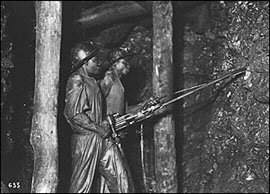
COHYDRO (Congolaise des Hydrocarbures) has been called into play an important role in an environment where, despite the price liberalization of oil products, the State has to keep an eye on a strategic sector with important implications to the transport market.
In order to end the continuous stock breaks of the country's fuel, Mr. Kabila's Government recently defended in the Parliament a law regarding the agreements it just signed with South Africa. These agreements mean USD 30 million, i.e., 2,000 tons of oil products for a period of 8 months. "This amount will allow us, regardless of commercial firms' needs, to restore our strategic stock, while permitting us to plan a long term supply", declared the Minister of Mines.
In fact, the mission of the Government is to turn Congo into a totally independent country from the energy point of view. "The preliminary research carried out in the central riverbed and certain lakes indicates that the presence of oil is quite possible. Consequently we will take up the matter again as soon as the war is finished" declared the head of the Congolese Ministry of Mines and Hydrocarbons.
|

